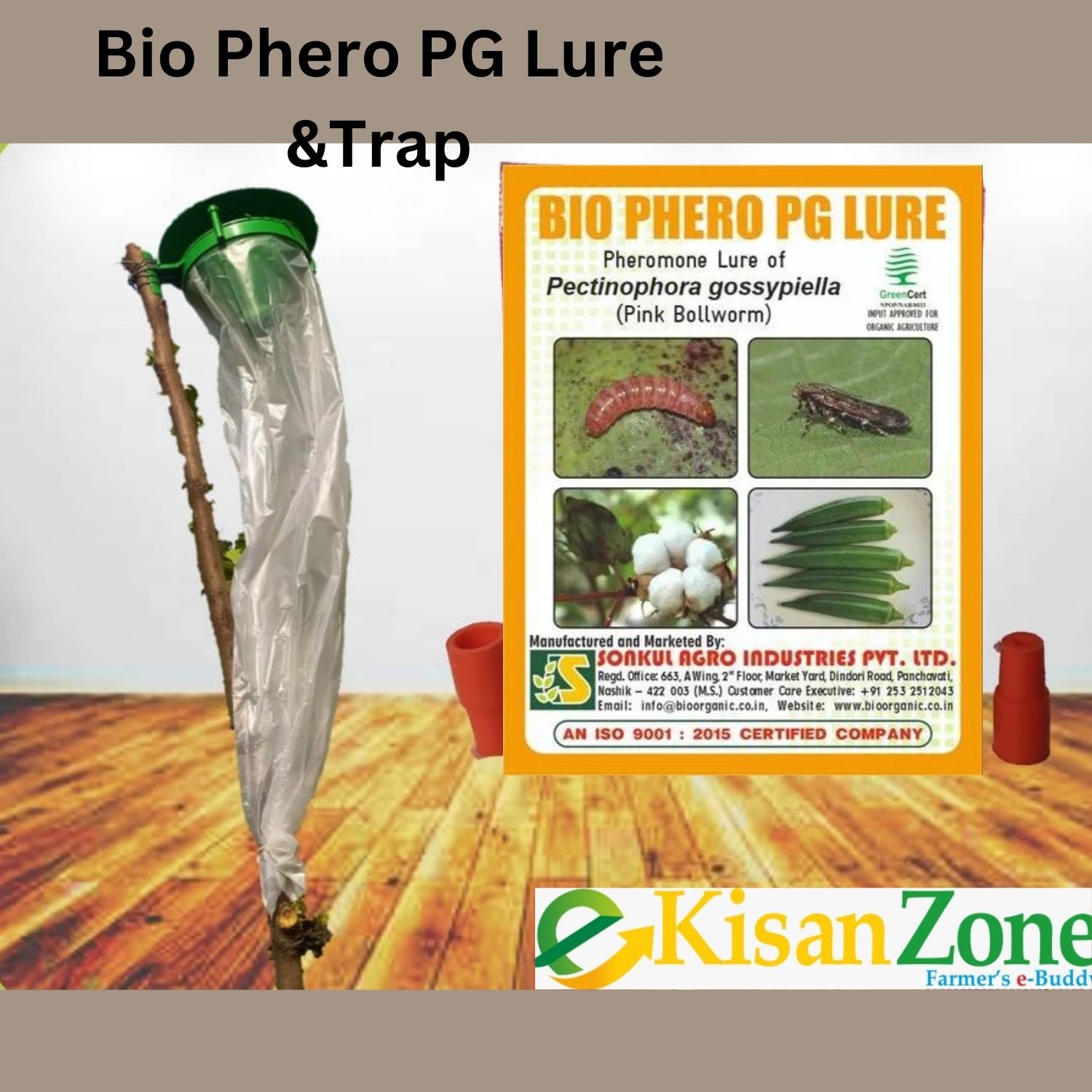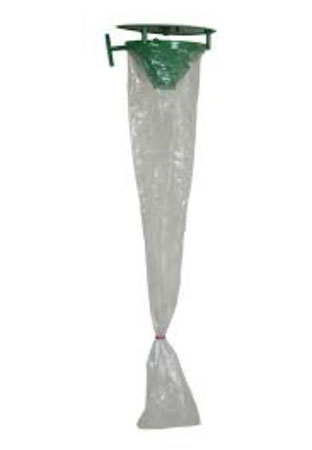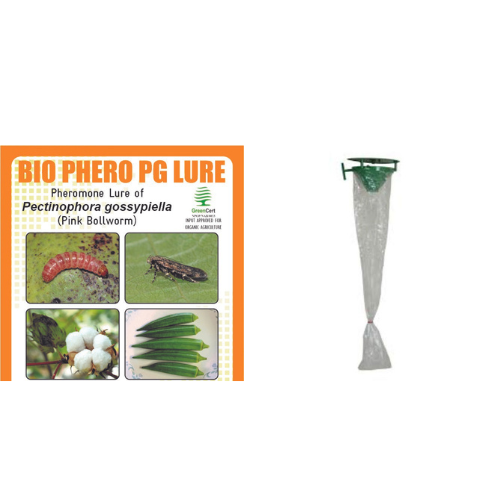




SONKUL AGRO INDUSTRIES PRIVATE LIMITED
Lure With Trap
Pheromone lure for Pink bollworm (Pectinophora gossypiella)
Target Plants: Cotton, Okra, etc.
Usage Instruction-Cut opens this pack and slides the lure piece outside. Do not touch the lure with bare hands. Fix this lure properly in a trap by sliding it into the hole provided in the funnel trap.
Replace the lure at the recommended duration. Wash hands thoroughly before and after handling the trap and lure. Discard used lure by burning or burying underground.
Trap to be used: Funnel Trap
Number of traps per Acre: 7-8
Life of Lure: 60 Days
Contents: One pheromone lure of Pectinophora gossypiella
Identification-The larvae have the characteristic dark brown head due to the sclerotized prothoracic shield. Adults are small, dark-brown moths measuring about 12-20 mm across the wings.
The head is reddish brown with pale, iridescent scales. Antennae are brown and the basal segment bears a pecten of five or six long, stiff, hair-like scales.
The labial palpi are long and curved upwards: the second segment bears a slightly furrowed hairy brush on the underside that becomes smooth distally and the terminal segment is shorter than the second. Forewings are elongated-oval, pointed at the tips, and bearing a wide fringe.
The ground color of the forewings is brown and they have fine dark scales that form vague patches in the region of the medial cells and at the wing base.
The apical portion of the wing is dark brown with a transverse, light-colored band. Sometimes the wing bears a round medial spot. Legs are brownish black with transverse, ochreous bands in the form of rings. The abdomen is ochreous toward the upper side, dark brown laterally, and covered with ochreous-brown scales on the underside.
Life Cycle- Eggs are laid in the sheltered places of the plant, underside of young leaves, on buds, or flowers. Once the bolls are 15 days old, these become favored sites for oviposition. The larval cycle lasts for 9-14 days in hotter regions.
Mature larvae are either 'short-cycle' and will go on to pupate or 'long cycle' to enter a state of diapause. While the former is the observed phenomenon in South India, diapause is seen in the North and Central parts of India.
Short-cycle larvae pupating may cut a round exit hole through the carpel wall and fall to the ground or may tunnel the cuticle, leaving it as a transparent window, and pupate inside. Pupation is inside a loose-fitting cocoon with a highly webbed exit at one end.
The pupal period ranges between 8 and 13 days. The life cycle is completed in 3-6 weeks. The late season has invariably overlapping broods. The long cycle larvae entering diapause spin a tough thick-walled, closely woven, spherical cell referred to as a “hibernaculum” with no exit hole. Always, the long-term larvae occur during the end of the crop season, when there are mature bolls present and larvae often form their hibernacula inside seeds. Hibernacula may occupy single seeds or double seeds. P. gossypiella hibernates as full-fed larvae during cold weather. Diapause larvae often spin up in the lint of an open boll and if still active in ginnery, will spin up on bales of lint, bags of seed, or in cracks and crevices.
Moths emerging from the hibernating larvae are long-lived with females and males alive for 56 and 20 days, respectively.
Nature of Damage-Larva when attacks the bud less than 10 days old, shedding of the bud occurs and the larva dies. But with older buds, the larva can complete development. There can be sure infestation on bolls but there need not be any shedding. Larva in flower bud spins webbing that prevents proper flower opening leading to rosette-bloom.
Ten to twenty days old bolls are attacked from under bracteoles. Larvae feed on the developing seeds. While in younger bolls entire content may be destroyed, in older bolls development could be completed on three to four seeds.
The Interloculi movement is also seen. Several larvae can infest a single boll. Target PlantsCotton, Okra, etc.
Usage Instruction-Cut opens this pack and slides the lure piece outside. Do not touch the lure with bare hands. Fix this lure properly in a trap by sliding it into the hole provided in the funnel trap.
Replace the lure at the recommended duration. Wash hands thoroughly before and after handling the trap and lure. Discard used lure by burning or burying underground.
Trap to be used: Funnel Trap
Number of traps per Acre: 7-8
Life of Lure: 60 Days